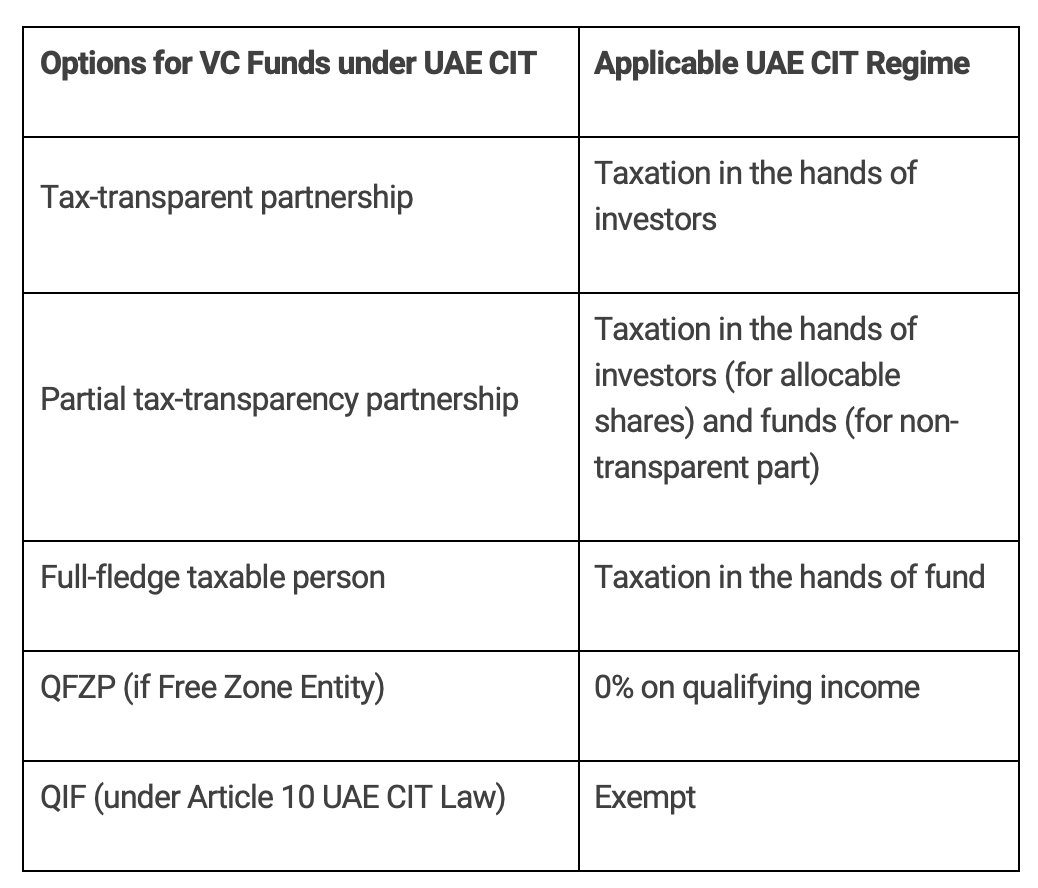

Ramadan Generosity Generates Tax Revenue
The Holy Month of Ramadan is the ninth month of the Islamic calendar Muslims worldwide observe it as a month of fasting, prayer, self-reflection, and enhanced community spirit. The annual observance of Ramadan is one of the five pillars of Islam.
Ramadan is regarded as a time of piety, charity, and blessings. Charities and foundations are noticeably more active during the Holy Month, providing assistance to those in need. In a spirit of generosity, meals are provided at mosques, malls, and other public places.
Businesses see the Holy Month of Ramadan as an opportunity to enable generosity by organizing sales and offering promotions, deals, discounts, gifts and benefits of all kinds. For example, companies may offer “buy one, get one free” or “two for the price of one” promotions, or other combined offers where certain products are offered for free or at a reduced price when bought together with another product (e.g., receiving one year of car insurance free of charge when purchasing a new car).
Traditionally, businesses also celebrate the Holy month by hosting Iftar parties, handing out Iftar snack boxes, or giving gifts in cash or in kind during Eid al Fitr, the religious feast marking the end of Ramadan.
This article discusses how to deal with UAE value-added tax (VAT) and Corporate Taxation (CIT) while maintaining the spirit of generosity embedded in the Holy Month of Ramadan.
Is There No Such Thing as a Free Lunch, Really?
Arguably, VAT does not like free items. It taxes so-called deemed supplies, where businesses give things away for free for which it previously deducted input VAT. However, not all free supplies are necessarily deemed supplies. Even though both look similar, i.e. a third party seemingly receives something without paying for it, only free supplies that are also deemed supplies carry VAT consequences.
As part of strategy to increase its sales and market share, a business may offer a customer a free item. For example, a supermarket could offer a “buy one, get one” formula for shampoo bottles. Although it provides the second bottle for free, the customer actually pays a lower price for two bottles. Therefore, this situation is not a deemed supply but rather a joint offer. In this case, the consideration paid by the consumer for (allegedly) one item only (i.e., the first bottle of shampoo) constitutes the taxable amount for the overall bundle supply (i.e., the two bottles of shampoo).
The same reasoning, also in terms of taxable amount determination, holds for promotional discounts, such as businesses slashing their prices by 50% during Ramadan. In this case, as in the previous situation, a business is not offering half of the product for free but rather a price discount. The discounted price reduces the taxable amount of the overall bundle supply.
A business might also consider giving a different item in addition to the item bought. For instance, upon purchase of an electric toothbrush, the seller can offer two free tubes of toothpaste. Although the item is given for free, such a “free supply” is still not a deemed supply. This is because the free item is given with the objective of increasing sales of the main item and should be considered ancillary to it. Similarly, such promotional offers and discounts can be claimed as deductible expenditures from a CIT perspective, given that such expenses are incurred wholly and exclusively for business purposes to promote products or services.
It is very different when a grocery store decides to donate food supplies to a shelter or to allow all employees to pick an item from its stock for Ramadan. Those constitute deemed supplies, and they are liable to VAT needs. This means that VAT on these deemed supplies constitutes a cost for the business since it is giving the items for free.
On the other hand, if employers know upon purchase that they are purchasing items not intended for taxable supplies, they cannot recover the input VAT (and the subject of the deemed supplies is not even on the table).
The business making the deemed supplies needs to issue a tax invoice for the deemed supply and, ideally, deliver it to the recipient. The VAT on the tax invoice is not deductible in the recipient’s hands.
In the UAE, the taxable value of deemed supplies is its cost. This constitutes the taxable basis on which VAT should be accounted for.
However, even though a supply may constitute a deemed supply, two thresholds apply. If a business stays below the thresholds, it can continue to recover the input VAT and does not have to account for VAT on the deemed supply.
There are two thresholds which apply alternatively:
- The output tax chargeable on all deemed supplies should not exceed AED 2,000 in a 12-month period (i.e., AED 40,000 of costs VAT exclusive), and;
- The value per person does not exceed AED 500 in a 12-month period (i.e., AED 10,000 of costs VAT exclusive), and it concerns samples or commercial gifts.
Fulfillment of one of these two thresholds allow businesses to occasionally provide small benefits or gifts to their employees and third parties without incurring VAT liabilities.
Given that these thresholds are very low, a business will easily exceed them. Considering the substantial administrative burden of monitoring the thresholds and implementing a process, a business could find it more practical to ignore the thresholds and always account for output VAT on the deemed supplies. That is also what most informed businesses seem to do.
While UAE VAT generates tax revenue from gifting by creating a deeming fiction, from a CIT perspective, expenses incurred on account of donations, grants, or gifts are not allowed as deductible expenditures when paid to a person who is not a Qualified Public Benefit Entity (“QPBE”). Where they are disallowed, they are added back and subject to UAE CIT.
UAE CIT legislation allows tax deductions for employment remuneration and any perquisites attached to the employment contract. Nevertheless, gifts given to employees that relate wholly or exclusively to the business but are not in accordance with the employment contract are not allowed.
Presently, the UAE CT Law and other domestic guidances released by the Federal Tax Authority do not clarify the deductibility of expenses for festive gifting to employees. Nonetheless, on the combined reading of the deductibility and non-deductibility rules, we are of the view that such expenses are unlikely to relate to the business fully. According to the UAE CT Law (Article 28, 2, d), the Federal Cabinet would further issue a decision to specifically list types of expenditure which are not deductible. We would additionally expect the FTA to issue guidance on the matter.
On the other hand, donations shall be allowed as a deductible expenditure when made to a QPBE. This is to encourage social and public welfare activities that are subject to regulatory oversight in the UAE. The clear distinction between the recipients of the donations, grants, or gifts makes it easier for tax authorities to administer the deductibility of expenses, incentivizing payments to specifically listed charities. We do, however, expect regular sponsorships to be deductible even when made to non-QPBE.
Entertainment and Personal Expenses Incurred during Ramadan
VAT is only recoverable when it is paid for goods and services bought to make taxable supplies. However, even though a business may exclusively make taxable supplies, there may still be expenses which are non-recoverable.
When an employer buys items and gives them to its employees for no charge and for their personal benefit, the employer cannot recover the input VAT. For example, if the employer decides to purchase chocolate dates for Ramadan to give to its employees, the input VAT paid is irrecoverable.
The same holds for so-called “entertainment expenses”. Entertainment services are “hospitality of any kind”. This includes hotel stays, food and drinks, tickets for shows and events and trips for entertainment. Therefore, if a business organizes an Iftar for its employees and for third parties, the input VAT is not deductible. Even though the event is held with the objective of improving social cohesion amongst the team and general ambience, indirectly increasing sales, and, therefore, having a clear business purpose, it is considered an entertainment expense.
However, a Public Clarification published by the Federal Tax Authority confirmed that VAT on certain entertainment costs is recoverable when used for a genuine business purpose, or when incidental to a business purpose. Notably, VAT on food and drinks provided during a business meeting, is recoverable, if:
- The hospitality is provided at the same venue as the meeting;
- When the meeting is interrupted, it is only by a short break for the provision of hospitality and then resumes as normal (e.g., a lunch break);
- The cost per head of providing hospitality does not exceed any internal policy the business has established;
- The food and beverages provided are not accompanied by any form of entertainment (e.g., a motivational speaker, a live band, etc.).
On the other hand, where the hospitality provided becomes an end in itself and is the reason for attending an event, it will be considered entertainment costs, and, thus, input VAT paid is not recoverable. In other words, if the staff comes for the party or the TED talk, the business will not be able to recover the input VAT. If the gathering is serious business, the input VAT will be recoverable.
Similar to UAE VAT Law, entertainment from a CIT perspective includes meals, accommodation, transportation, admission fees, facilities and equipment used for entertainment, and expenses for amusement.
From a CIT perspective, entertainment expenses incurred for a taxable person’s customers, shareholders, suppliers or other business partners are restricted to 50%. Given that entertainment expenses have a private element attached to them, which may be difficult to estimate and apportion, the UAE CIT legislation straightway disallows 50% of such costs.
While the current guidelines explain the policy objective of limiting the deductibility of expenses, citing personal consumption, it also states that staff entertainment expenses are fully deductible if incurred for “business purposes”.
There may also be instances where personal non-business expenses form part of the entertainment expenses. Should this be the case, it is important to identify entertainment expenses that relate to the business activity and only allow 50% of such identified portion.
For example, a family-owned company owns a box at the football stadium that is used for a client’s entertainment. Thus, any expenses incurred for client entertainment shall be allowed to the extent of 50% of such expenditure. Conversely, if the shareholder’s family uses such a box, the entire expenditure will be disallowed since it is personal in nature.
Charities
Although charities mostly carry out transactions that are outside the scope of VAT, given that, for the most part, they do not charge any consideration, they may still occasionally render taxable supplies and, therefore, incur certain VAT liabilities, starting from the obligation to register for VAT purposes.
Charities mainly receive their income from subsidies or donations, which are outside the scope of VAT. Occasionally, they may provide sponsoring opportunities to businesses, which are subject to VAT.
Under normal VAT recovery rules, input tax is only recoverable to the extent it relates to taxable supplies. In most cases, charities will be required to allocate and apportion VAT recovery between taxable activities (recoverable) and non-taxable activities or exempt activities (non-recoverable). Therefore, the input VAT recovery may prove to be quite complex.
A special refund scheme applies to so-called Designated Charities which meet the criteria set by the UAE Federal Tax Authority (FTA).
Similar to UAE VAT legislation, charitable organizations carrying out social, cultural, religious, or other public benefit activities without the motive for profit distribution will be exempt from CIT subject to certain conditions. Additionally, to achieve the exemption status, such organizations should apply to the local or Federal Government entity with which they are registered for it to be listed in the UAE Cabinet Decision.
Accordingly, such organizations shall be exempt from CIT from the beginning of the tax period in which it is included in the relevant Decision. The UAE CIT legislation uses the term “Qualifying Public Benefit Entity” (QPBE) for such organizations.
The conditions to be fulfilled by a QPBE to be exempt from CIT include:
- It is established and operated for any of the following:
- Exclusively for religious, charitable, scientific, artistic, cultural, athletic, educational, healthcare, environmental, humanitarian, animal protection, or other similar purposes.
- As a professional entity, a chamber of commerce, or a similar entity operated exclusively for the promotion of social welfare or public benefit.
- It does not conduct a Business or Business Activity, except for such activities that directly relate to or are aimed at fulfilling the purpose for which the entity was established.
- Its income or assets are used exclusively in the furtherance of the purpose for which it was established, or for the payment of any associated necessary and reasonable expenditure incurred.
- No part of its income or assets is payable to, or otherwise available, for the personal benefit of any shareholder, member, trustee, founder, or settlor that is not itself a Qualifying Public Benefit Entity, Government Entity, or Government Controlled Entity.
- Any other conditions as may be prescribed in a decision issued by the Cabinet at the suggestion of the Minister.
As such, a QPBE should not conduct business or business activity unless the same is aimed at the purpose for which it is established. That is, it may carry out commercial activities as long as the objectives of the organization are met and any additional surplus is not distributed as dividends or any other benefit. For instance, the following shall not be construed as commercial activities:
- Organizing events such as gala dinners to raise funds.
- The sale of admission tickets by a museum.
- Or the sale of refreshments in the canteen of a sports club.
As stated above, on meeting the above conditions, a Qualifying Public Benefit Entity will be an exempt person and thus will not be subject to corporate tax in the UAE, and any payments made to such organizations will be available for tax deduction for the payor.
Conclusions
The Holy Month of Ramadan triggers several tax consequences for businesses.
First, businesses making sales promotions are required to examine the tax consequences of these sales promotions.
Businesses may also not be allowed to recover input VAT on certain purchases or will be liable for VAT on a deemed supply when providing employees with entertainment or gifts.
Similarly, for CIT purposes, it is pertinent to segregate business expenses, entertainment expenses, and non-business-related expenses to assess the amount of tax deductible.
Charitable organizations should evaluate whether they qualify as exempt persons from the perspective of CIT and evaluate the VAT implications in a time-bound manner.
Given the very strict penalty framework, it is important to be aware of the VAT/CIT consequences of these activities and take action in this regard to avoid any claims or penalties.



























